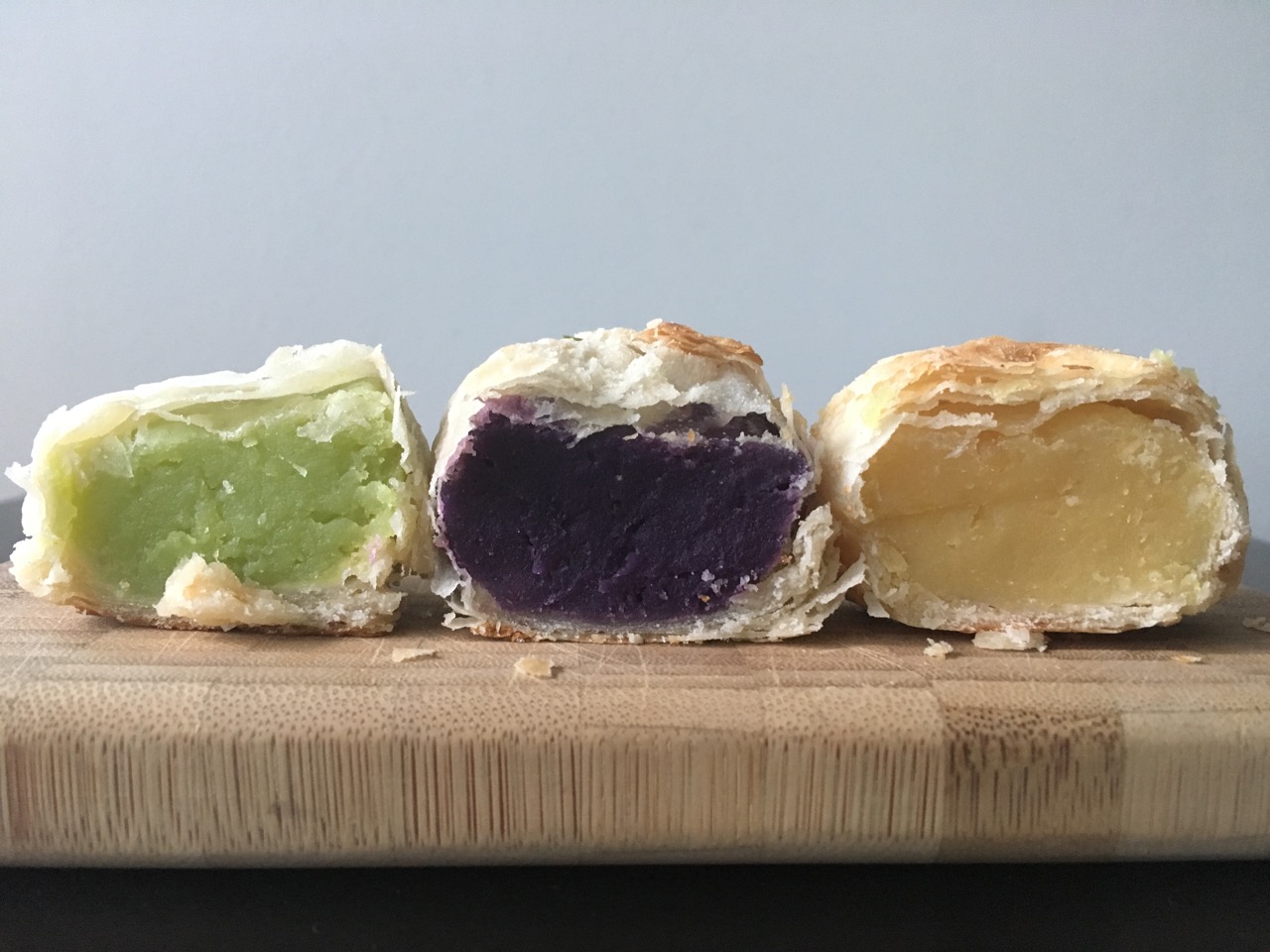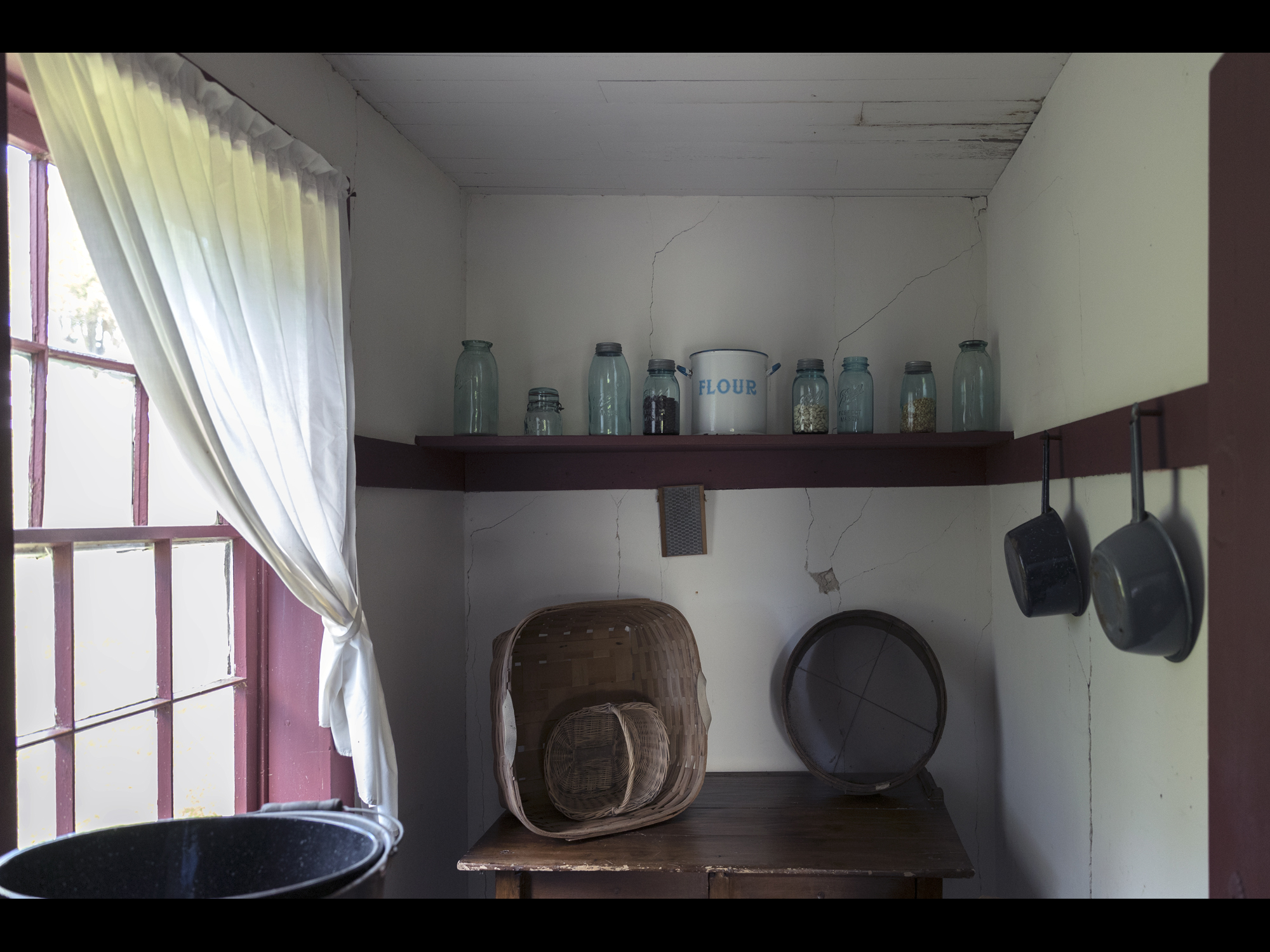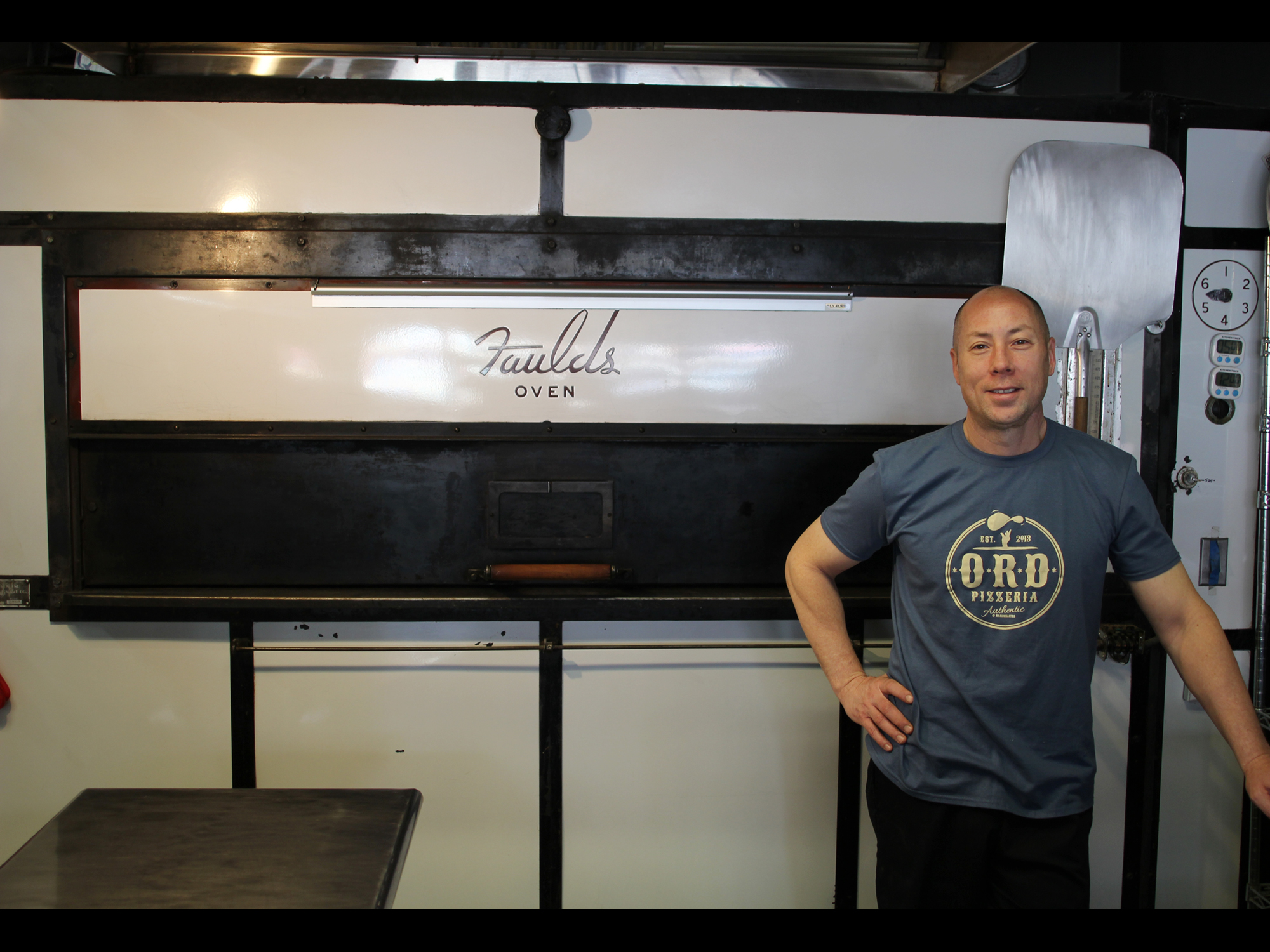YOU WILL NEVER CATCH ME SAYING that pizza has to only be one way. Pizza is a hut with many mansions, as far as I’m concerned, but I have to admit that the spread of Neapolitan-style pizza in Chicago over the last decade or so has evolved my outlook. Some days I want excess, some days I want greasy cheapness, but if I want zen perfection, Neapolitan is the style for me—it’s pizza at its peak of balance, chewy, feather-light crust, tangy acidic tomatoes, mellow creamy mozzarella, a little green brightness from basil.
But okay, some people don’t love that, as some people don’t love Santa Claus or puppies. That’s my interpretation, I should say, not how it’s put by Simone Falco, who is the CEO of Rossopomodoro at Eataly USA. If you ever thought about whether the pizza section at Eataly in Chicago had a name, you probably thought it was La Pizza & La Pasta, which is what the main sign over that area says. But in fact it’s an outpost of Rossopomodoro, “red tomato,” a family-run Naples pizza chain now with locations all over Eataly’s world. Falco, tall and humorously charming with a shaggy head of hair (he reminds me of the comic actor Richard Libertini), is Neapolitan pizza’s perfect ambassador.

“Rossopomodoro is a partner with Eataly, all in the western hemisphere,” Falco says as we stand a little after lunchtime in front of the gleaming gold-tiled woodburning ovens, pizzaiolos busily patting out crusts and twirling them into the ovens on long paddles. “We partnered with them since New York opened in 2010. And we’ve always done the classical Neapolitan pizza.”
But the most authentic Neapolitan pizza has characteristics that some Americans find a little weird—it’s soft in the center, and a little wet from the juice from the tomatoes, not crisped up like an American slice of pizza. Knife and fork pizza. So Eataly and Rossopomodoro decided to create other styles of pizza, to appeal to people who didn’t love the archetypal Neapolitan. In Naples, or Napoli as he says it, Falco says “pizza can take different [forms], different nuances. Historically, geographically, dietary.”
To give me context, he reaches into one of four wooden, glass-top bins, and pulls out a round of dough. As uniform in its off-white color as a ball of mozzarella, thanks to the ultrafine “00” flour, smooth but dotted with tiny little bubbles under the surface, this is what we know as Neapolitan pizza dough. “You see how much air is inside?” he says. “We try not to work the dough too much, that’s a mistake people make. You do so much to accumulate the air, you don’t want to squeeze it out.”
The Rustica is the one I connect with most, because it’s what my grandmother used to do. Bring it over, put some tomato on it, no mozzarella, because they didn’t have any money for that.
He puts it back and moves on. He pulls out another ball of dough. This time it’s flecked with whole wheat; it’s also bigger. It’s going to make a thicker pizza. “The pizza used to be built in the home, from the leftover bread,” he explains. “The rural areas and the suburbs around Napoli, I can tell you twelve small towns where the bread was made and brought to the city. So if the classical pizza is the gourmet, is the city pizza, the Rustica, the first [new] one that we make, is the one made with, not the ’00’ flour, but with the whole grain, like the bread, and has more of a rural feeling. We use the Type 1 kind of flour, which is a mix of the whole grain and the ’00’.”
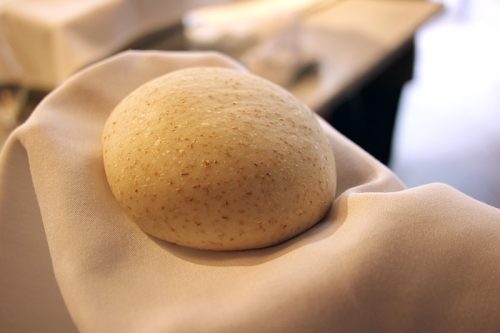
Falco says, “The Rustica is the one I connect with most, because it’s what my grandmother used to do. Bring it over, put some tomato on it, no mozzarella, because they didn’t have any money for that.”
He pulls out a third ball of dough; this one is floppier, showing wrinkles as the skin is strained by its own weight. “Then Napoli also has the coastal side, Amalfi, the Sorrento, and the winds can dry it up a little bit. If you go to Vico Equenzo, you go to Sorrento, the pizza is crispier. We recreate this pizza in the Moderno version, which is a different way to produce the dough. It takes more than two days, it has much more water in it.”
“And it has to be cooked at a lower temperature. That’s why the two ovens now, one is fired by wood at 900 Fahrenheit and the pizza cooks in about 90 seconds, the other is activated by wood with coils in there, about 550. That would cover the Moderno one, and the Rustica, which take about 3-1/2 to 4 minutes. Another thing we are very proud of—we don’t cook the tomato. The only thing we do is mill it, and add salt. So it’s not really a sauce, just pure tomato.”

He pulls out a plastic-wrapped dough ball for the last one. “It has to be wrapped in plastic to hold it together. I wouldn’t call it gluten-free because obviously the environment has gluten everywhere. But the dough per se, of which we’re very proud, doesn’t have gluten.” He sets it down and holds up a bag of the dough, which is from Caputo in Italy, the best-known brand of “oo” flour. “It’s made of buckwheat, corn, rice. And also there is a process that one professor from Bari, he was able to take away from the wheat, the gluten. It’s interesting that it’s the only gluten free flour that doesn’t contain xanthan gum.” This one is called Leggere, or “light.”
Over the four bins there hangs a sign with two digital countdown clocks. “We present the Moderna and the Rustica at a longer retardation, two days as you can see there. The Classica and the Leggere take about one day.” How long does the dough last, I ask? “Once it’s fully rested, it lasts about four hours. You can use it for four hours. So we are always making more in the rotation.”
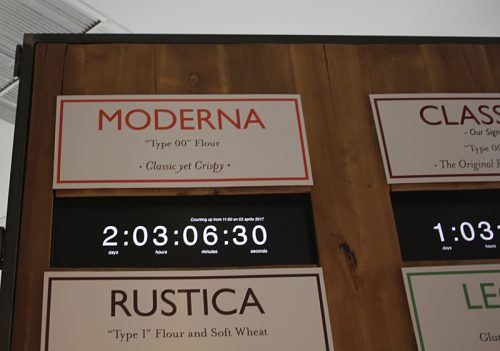
“You want to give it enough time for all the yeast to work. Sometimes you eat pizza, and you’re drinking glass after glass of water, and you think it’s because it was too salty. No, it’s because the yeast is still working in your stomach. That’s why it’s important to let the dough rest and make all the bubbles,” he explains.
THINGS MOVE FAST AT ROSSOPOMODORO AND they’re soon whipping out four different margherita pizzas using the different styles of dough. In between the ones Simone Falco is showing me, they’re also running some recipe tests for a familiar face—Jason Hammel of Lula Cafe, who will be the Pizza Pairings guest chef on April 11. (I’m sworn to secrecy what the pizza he was testing contains, though I will point out that at one point they were talking about leaving the clams in their shells, like they do in Italy.)
About as fast as I can take photos and eat a slice, I soon have four margherita pizzas in front of me. First, the Classica, a very fine example of the authentic “City” Neapolitan as Falco put it:
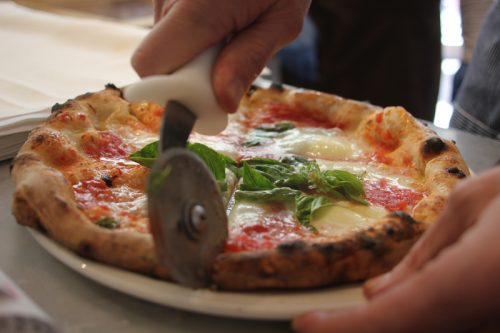
Then the Moderna, thicker and a little crunchier, though not that different—just more bread. “People from New York, who like the crispier pizza, they like this one,” he says.
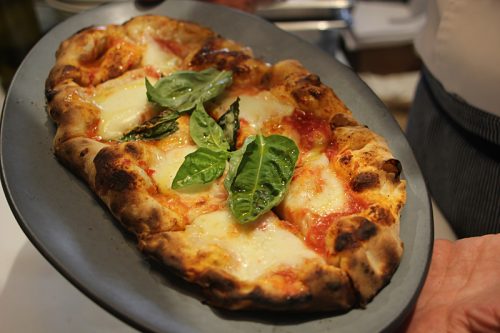
The Rustica, more focaccia-like, and with its hint of whole wheat nuttiness, I like it a lot:
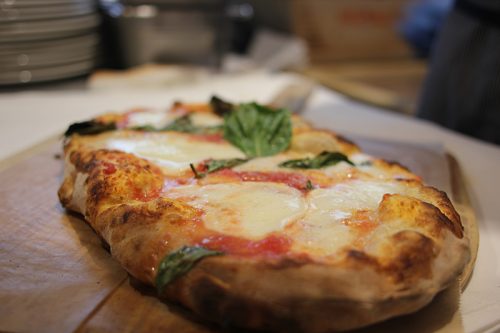
And finally the Leggere. The color is oddly pale, but the flavor combination—a little cornmeal and sweetness, the lightness of rice flour—is pleasing. I could see ordering this for its own flavor, not just because of what it’s missing.

At first, I’ll admit, I found it a little disappointing that Eataly and Rossopomodoro felt the need to make pizza thicker for Chicago tastes, stuff-yourself-on-bread American tastes. (Though I should point out that while they’re launching them here, they’ll eventually be at all the Eatalys Rossopomodoro is involved with.)
But it’s not like they’re turning Eataly’s pizza into Little Caesar’s. All of these are well-balanced crusts, of kinds you might see in Italy, where there’s plenty of big puffy pizza, thin crispy pizza, and everything in between. We get to talking about Pizzarium, the celebrated Rome pizzeria which is opening a spot in the West Loop this summer. Roman pizza is supposed to be thin and crispy—yet Pizzarium is very much focaccia-style pizza, baked and set out to be cut by the square slice. Which is to say, there’s room for all of these here, why not.
I just have one more question for Falco—we tried all margherita pizzas, logical enough for a taste test, but will these four styles have distinct toppings?
“The process is taking a little time, because we’re also a very busy restaurant,” he answers. “So what we decided to do is, first you can mix and match. Keep the same pizza, if you don’t ask otherwise, we’re going to make you the Classica. The next stage, next month, we’re going to give you what we believe is the best topping for each pizza. I don’t necessarily think the tomato sauce is the best for the thicker pizzas. You could use mushrooms and sausage, or something—that would be killer there.”
Michael Gebert has met a pizza he didn’t like, but not often, as editor of Fooditor.
Latest
Join the Discussion
After you comment, click Post. If you're not already logged in you will be asked to log in or register with Disqus.





